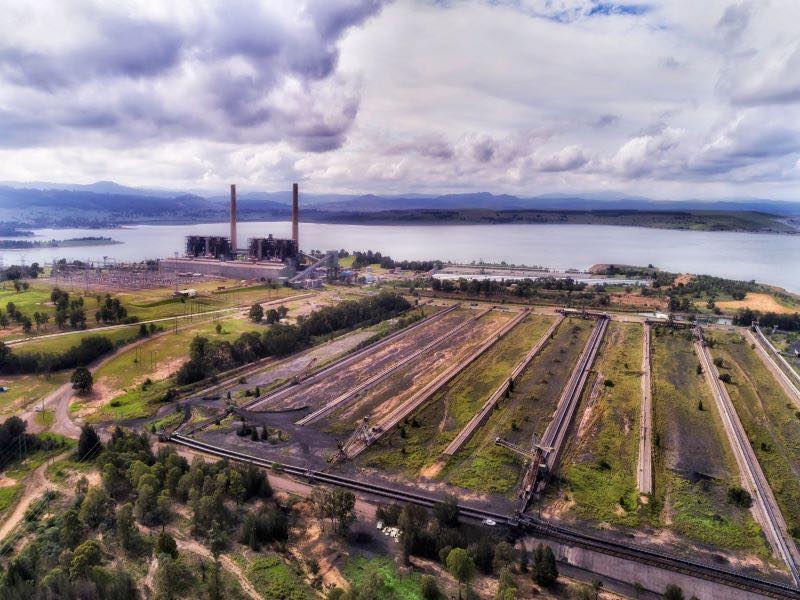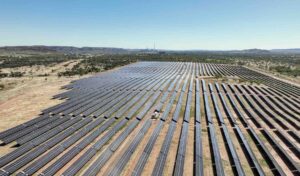Most media attention on Snowy Hydro’s two mega-projects has been focused on the Snowy 2.0 pumped hydro scheme, understandably because of its scale.
The Snowy 2.0 ‘highlights’ reel include its recent ‘review and reset’ to $12 billion (that really is more like $25 billion when all costs are included – twelve times the initial estimate), and tunnelling machine Florence taking twenty one months to bore a really short tunnel (150 metres).
Snowy Hydro hopes to ‘unpause’ Florence soon so she can start boring the remaining 15,850 metres. But just this week we heard of yet another EPA Clean-Up Notice for “suspected environmental and water impacts from contaminated drill and blast spoil placed in Kosciuszko National Park”.
Meanwhile, the Hunter Power Project (HPP) has managed to keep a low profile, even though it has similar failings. HPP was to have been commissioned this month, so let’s have a look at how things are going.
HPP is Snowy Hydro’s 660 MW gas/diesel power station being constructed at Kurri Kurri, NSW. It was given the thumbs up by Prime Minister Scott Morrison, in May 2021, after the energy sector failed to respond to his ultimatum “to build 1,000 megawatts of new dispatchable energy to replace Liddell power station before it closes in 2023”.
At the time energy experts disputed there would be a generation gap after Liddell closed and contended that HPP was not needed.
It was originally costed at $600 million and was to be urgently completed by December 2023, and HPP was heralded with the usual nation-building spin from the Snowy 2.0 copybook: “The Morrison Government is stepping up and building a new gas power plant in the Hunter Valley, which will create jobs, keep energy prices low, keep the lights on and help reduce emissions”.
Colleagues and I reported at the time that none of those claims were true, except creating jobs (10 permanent ones), and that the station was likely to cost around $1 billion plus its pipeline connection and storage.
So we were not surprised when Snowy Hydro ‘reset’ HPP’s estimate to $950 million in August, at the same time as the Snowy 2.0 reset.
But this 60% cost hike is only for part of the project.
Snowy Hydro’s estimates never encompass the complete project, invariably only covering the main plant and excluding other components such as financing, land, approvals, owners’ costs etc.
And most misleading of all, HPP estimates exclude the lateral pipeline connection and gas storage, just as Snowy 2.0 estimates exclude the electricity transmission connection.
The initial estimate for HPP’s lateral pipeline/storage was $100 million (Oct 2021). Six months later this blew out to $264 million (EIS, April 2022). Last month the APA Group, the pipeline owner/builder, announced it had reached its final investment decision at a cost of $450 million.
No doubt the cost to Snowy Hydro will be well over $500 million when APA’s profit margin and inevitable cost overruns are added, together with the operating cost of the compressors etc.
So, it is now apparent that the all-up cost for HPP will be well over $1.5 billion, $1 billion more than the initial estimate of just 2½ years ago. Not quite attaining Snowy 2.0’s staggering levels of underestimation, but still 2.5 times understated.
And HPP is also experiencing significant delays, with construction now expected to take 3½ years rather than 2½ years. If achieved, HPP will be operating in December 2024, 1½ years after the supposedly critical date of Liddell’s closure.
Like Snowy 2.0, HPP is locationally challenged. For Snowy 2.0 its remote location in Kosciuszko National Park has required 1,000 kilometres of transmission connections to Sydney and Melbourne, costing over $10 billion – a ludicrous eight times Snowy Hydro’s initial estimate of $1bn to $2bn.
In HPP’s case, it is located beyond the end of the Sydney-Newcastle gas trunkline, requiring a 21 kilometre lateral pipeline connection as well as an on-site storage pipeline.

HPP’s storage will be massive, Australia’s largest, consisting of 24 kilometres of one-metre diameter pipe in a labyrinth arrangement, storing 70 terajoules at high pressure. Even so, it will only be sufficient to power the turbines for ten hours at full output. It will then take more than a day to refill, provided of course there is gas available to purchase from the heavily committed trunkline.
Hence, HPP is incapable of providing dispatchable energy 24/7, the very intent of Morrison’s ultimatum. Why build a gas power station at a location without adequate gas (‘The generator on gas rations’, RenewEconomy, Oct 2021)?
Worse still, big batteries will outcompete HPP. Equivalent batteries may cost a bit more (prices are dropping), but they have a much lower operating cost, emit zero greenhouse gases and pollutants, and respond to demand changes in milliseconds versus a 30 minute ‘fast start-up’ for gas turbines.
As an energy wit said, ‘batteries will have finished the after-dinner mints before gas generators have started the entrée’.
And what of the claims that HPP will be ‘hydrogen-ready’.
Snowy Hydro executives eagerly assured Senate Estimates in October 2021 that “we’re ready … the input energy into the generator can be 30 per cent hydrogen without upgrade and 100 per cent hydrogen with upgrade”. Though they failed to mention the extra cost, or that there are no hydrogen power stations operating in the world.
When in opposition Labor initially opposed HPP because it was to be powered by natural gas and diesel. But after pressure from some constituents, Anthony Albanese back-flipped in February 2022 with a compromise apparently based on Snowy Hydro’s assurances, pledging to “spend up to $700 million extra to equip HPP to run on green hydrogen made with renewable energy instead of fossil fuels”. Labor’s plan was for HPP to operate on a 30 per cent hydrogen blend when commissioned, increasing to 100 per cent hydrogen by 2030.
But Labor’s plan was soon dashed by Snowy Hydro instructing APA to not build the storage pipeline to be capable of storing hydrogen because it “would be uneconomic” (EIS, April 2022).
Does the government realise that HPP will not be hydrogen-ready and, in fact, will never be able to run on hydrogen without rebuilding from scratch?
According to Snowy Hydro, “HPP remains economically viable”. We beg to differ, having stated at the outset, before the subsequent cost blowouts, that HPP has no prospect of earning anywhere near the revenues needed to recover its outlay.
So, why are taxpayers forking out over $1.5 billion for a power station that can only run on gas for ten hours, can never run on hydrogen, will be emitting greenhouse gases potentially after 2050, will be outcompeted by batteries, and will never pay for itself?
When announcing the result of the Snowy 2.0 and HPP reset reviews the shareholding Ministers, Chris Bowen and Katy Gallagher, “committed to being transparent and honest with the Australian people about the challenges and opportunities for Snowy, unlike the previous Government”.
However, despite numerous requests for detailed information, all that has been provided to explain the $billions of blowouts and how the two projects remain viable is a one-page Ministerial media release.
The Government has doubled down on supporting both HPP and Snowy 2.0, seemingly committing to both projects no matter how long they take and how much they cost.
What is it about these two dud projects that warrants such dogged and unlimited government support, especially when not one of Snowy Hydro’s project claims or estimates over nearly seven years has been anywhere near accurate?
So much more could be done with the tens of billions of taxpayer dollars being squandered on these two hapless projects.
Ted Woodley is a former managing director of GasNet, PowerNet and EnergyAustralia










